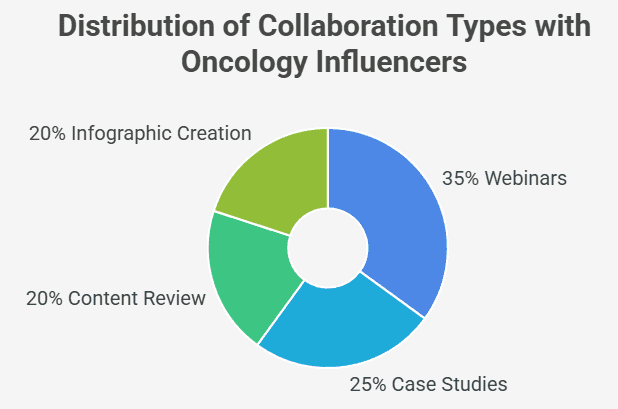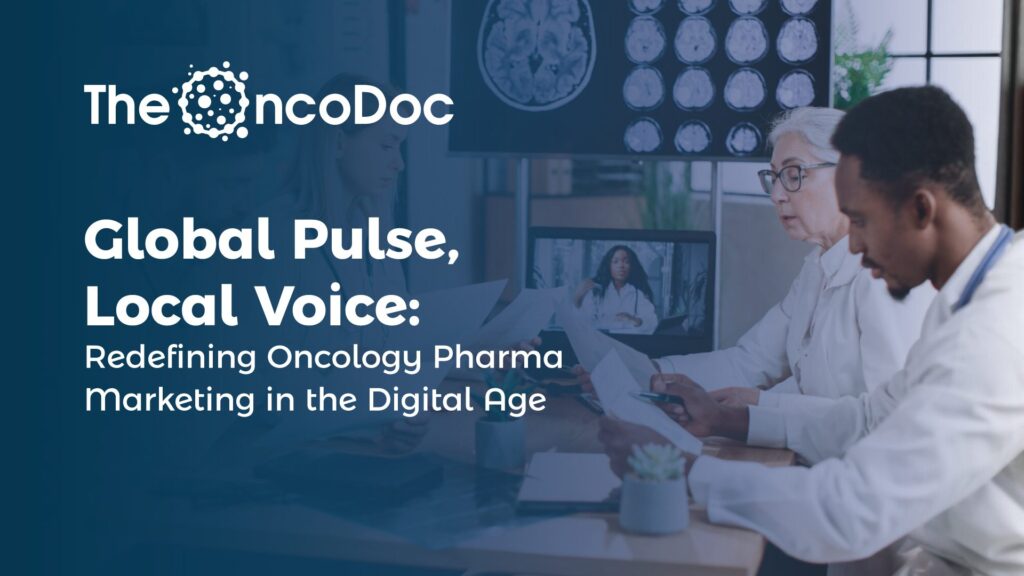Introduction: The Global Digital Shift in Oncology Pharma
Oncology, as a therapeutic domain, is advancing rapidly—and not just in science, but in how information, influence, and engagement are delivered. With rising cancer prevalence globally, pharma brands are navigating complex ecosystems that span regional regulations, practice patterns, and cultural perceptions of care. In this evolving environment, digital marketing is no longer an add-on—it’s a strategic imperative.
What was once focused solely on Key Opinion Leaders (KOLs) in major hospitals is now a multi-tiered approach involving micro-influencers, global HCP networks, and localized education. From Mumbai to Madrid, the opportunity lies in crafting digitally native campaigns that support oncologists, empower patients, and scale trust—region by region, platform by platform.
1. Global Engagement Requires Regional Customization
No two markets are alike in oncology. A campaign that works in North America may fall flat in Southeast Asia if it’s not culturally sensitive or linguistically adapted. Global pharma players must develop multi-market digital frameworks that enable:
- Custom content by region (language, tone, regulatory)
- Local HCP involvement in campaign creation
- Influencer partnerships with regional credibility
- Platform prioritisation based on geographic usage

2. The Rise of Oncology Micro-Influencers
Traditionally, digital pharma relied on major KOLs and conference speakers. But today, mid-level oncologists with active social media presence or community standing are increasingly influential. Known as “micro-influencers,” these HCPs often:
- Share bite-sized treatment updates
- Post real-life case management stories
- Host peer Q&A sessions on platforms like WhatsApp and Telegram
- Provide region-specific care perspectives
Collaborating with micro-influencers allows pharma brands to scale clinical education organically. The key is maintaining transparency, compliance, and clinical accuracy, not just reach.
3. Content Format Is Everything: Tailor for Consumption Habits
In a world of short attention spans and mobile-first access, how content is delivered is just as important as what it says. Regional preferences dictate success.
For instance:
- Infographics and swipe decks perform well in EMEA and India
- Short videos dominate in the US, APAC, and Latin America
- LinkedIn and WeChat are preferred by specialists in urban markets
- Podcasts and CME snippets are gaining traction globally

4. Educate, Don’t Just Promote: Clinical Utility Is Key
Global oncologists expect more than promotional messaging—they want digital tools that enhance their practice. Pharma must evolve into a partner in problem-solving by offering:
- Interactive tumor type–specific treatment algorithms
- Digital guidelines adapted by country protocols
- Real-world evidence dashboards from diverse patient populations
- Patient discussion aids in multiple languages
Assets that support clinical decisions build trust, especially when adapted to local reimbursement models and clinical workflows.
The Hidden Value of Local Patient Education Tools
While global oncology marketing has traditionally focused on HCPs, there’s a growing case for supporting oncologists through locally relevant patient education tools. Physicians often cite time constraints and language barriers as major obstacles in patient counseling. Pharma brands that provide customizable, multilingual education content gain not just goodwill—but recurring usage at the point of care.
Effective formats include:
- Regional-language explainer videos on treatment regimens (e.g., immunotherapy, oral chemotherapies)
- Printable patient decision aids aligned with local cultural beliefs and literacy levels
- QR-code enabled info cards for caregivers on managing side effects
- Interactive risk calculators tailored to local comorbidity data
These assets help oncologists enhance understanding, adherence, and comfort among their patients—especially in regions where oncologists must navigate significant doctor-to-patient ratios.
5. Data-Driven Strategy: Measure What Actually Matters
Vanity metrics like impressions and CTRs don’t tell the full story in oncology. What matters is clinical relevance, repeat engagement, and physician behaviours change.

6. Regional Compliance Is Not Optional
In a global campaign, medical-legal compliance across jurisdictions is a minefield. From GDPR in Europe to HIPAA in the US and DPCO guidelines in India, digital pharma must:
- Maintain clear labeling and disclaimers
- Use region-specific branding and disclosures
- Avoid off-label promotion or inference
- Work with legal and regulatory teams during campaign planning
Ensuring that all digital content passes regional scrutiny protects brand integrity and builds long-term credibility.
7. The Role of Field Teams in Global Digital Rollouts
Digital engagement doesn’t replace sales reps—it empowers them. In global campaigns, field teams become more effective when supported by:
- Digital insights on physician behavior (opens, downloads, interactions)
- Co-branded toolkits and follow-up content
- Region-specific campaign talking points
- CRM triggers for rep-HCP alignment
When reps extend the value of digital tools in real-time discussions, they reinforce brand relevance and deepen physician trust.
Mini Case Study: Global Rollout of a Targeted Therapy Campaign
🎯 Objective: Launch a new targeted therapy for non-small cell lung cancer (NSCLC) across 7 markets
📲 Strategy:
- Created region-specific videos featuring local oncologists
- Launched WhatsApp chatbot to deliver algorithm-based recommendations
- Hosted bilingual CME webinars co-chaired by local societies
- Distributed adaptive infographics through verified LinkedIn networks
📈 Outcomes:
- 53% average tool re-use rate in APAC
- 62% HCPs from EMEA engaged with patient explainer decks
- 29% uptick in CME registrations in LATAM via micro-influencer links
This multi-format, multi-market approach proved that global strategy must feel local to drive performance.
Conclusion: The Future of Oncology Marketing Is Global—and Deeply Personal
In oncology, lives depend on accuracy, empathy, and timing. Pharma’s digital strategy must reflect that sensitivity—especially across regions with differing needs and resources.
🎯 To succeed in global oncology marketing:
- Create assets that inform, not just advertise
- Partner with both KOLs and micro-influencers
- Deliver content in the language and format doctors prefer
- Measure behaviour, not buzz
- Align digital with field teams, and compliance with creativity
Global digital success in oncology is not about scaling faster—it’s about connecting deeper. Across every region, one truth holds: content that supports care will always outperform content that sells it.
The Oncodoc team is a group of passionate healthcare and marketing professionals dedicated to delivering accurate, engaging, and impactful content. With expertise across medical research, digital strategy, and clinical communication, the team focuses on empowering healthcare professionals and patients alike. Through evidence-based insights and innovative storytelling, Hidoc aims to bridge the gap between medicine and digital engagement, promoting wellness and informed decision-making.



